Introducción
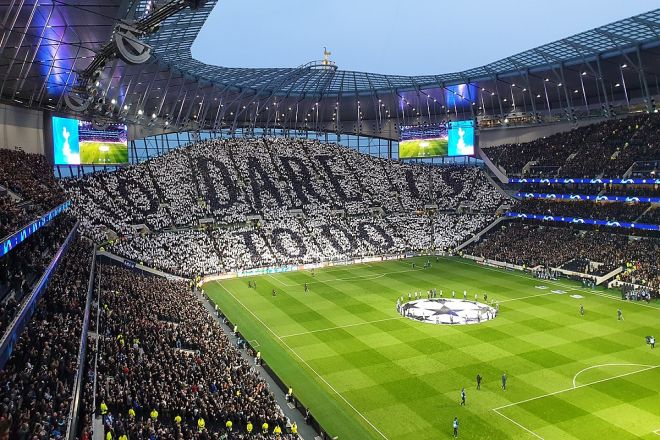
With the rapid advancement of science and technology, Pantalla LED technology has developed greatly, and its application fields have become more and more extensive. LED displays have become an indispensable part of various sports venues. They not only provide audiences with rich event information but also greatly enhance the viewing experience.
The LED display screen on the court, with its unique charm and function, has become an important bridge connecting the audience and the event. They can update game data in real-time, display exciting moments, deliver advertising information, and even provide interactive experiences, allowing viewers to participate more deeply in the event.
This article will focus on 3 LED displays that are essential on the court. Let’s take a look.
1. Why does the stadium need an LED display?
The reason why stadiums need LED displays is mainly based on the following reasons:
First of all, the LED display screen can transmit event information accurately and accurately in real-time. During the game, the LED display can quickly update key information such as scores, goal moments, player data, etc., ensuring that the audience can keep track of the latest developments in the game at any time.
This not only enhances the real-time and interactive nature of watching the game but also enhances the tension and enjoyment of the game.
Secondly, LED display is an important tool to enhance the stadium atmosphere and audience experience. By playing highlights of the event, team history reviews, player introductions, and other content, the LED display can stimulate the audience’s sense of participation and belonging, making the audience more immersed in the atmosphere of the game.
At the same time, the colorful and clear LED display also adds a sense of modernity and technology to the stadium, improving the overall viewing environment.
Furthermore, LED display screens are an important carrier for commercial publicity and promotion. On the court, LED displays can play sponsors’ advertisements and promotional videos, providing extensive exposure opportunities for brands and products.
This not only helps to increase the commercial value of sponsors but also brings considerable advertising revenue to the stadium operators and promotes the sustainable development of the stadium.
In addition, with the continuous development of technology, the functions and applications of LED displays are also constantly expanding. For example, some advanced LED displays can implement interactive functions, allowing viewers to participate in voting, lottery, and other activities, further enhancing the audience’s sense of participation and entertainment.
At the same time, the high-definition and large-screen LED display also brought more shocking visual effects to the audience, improving the overall viewing experience.
2. Introduction to 3 LED displays on the court
In modern stadiums, LED displays have become an indispensable part. They can not only provide real-time game information but also enhance the atmosphere of the game and enhance the audience’s sense of participation. Below, we will introduce three common stadium LED displays in detail:
LED scoreboards
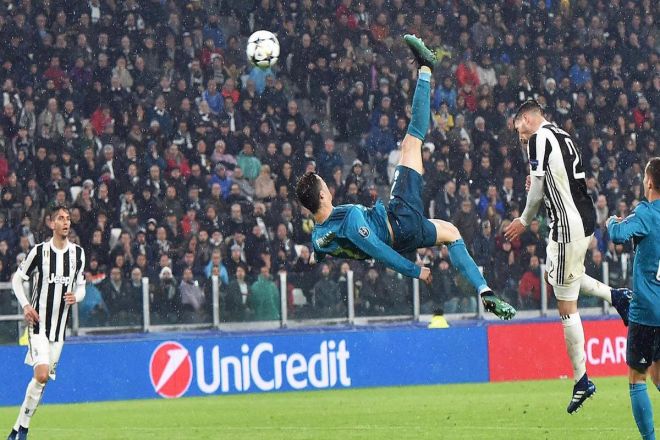
First of all, peripheral LED displays are one of the most common display types in stadiums. They are usually installed on the sides or top of the auditorium, forming a visual circle around the stadium. These displays are mainly used to play advertisements, sponsor information, and event promotion content. Since peripheral LED displays are usually within the audience’s line of sight, their display effects and content design are particularly important.
High brightness, high contrast, and vivid colors allow these displays to remain visible in a variety of light conditions, capturing the attention of your audience. At the same time, advertisers can also use these displays to display brand images and product information to maximize commercial value.
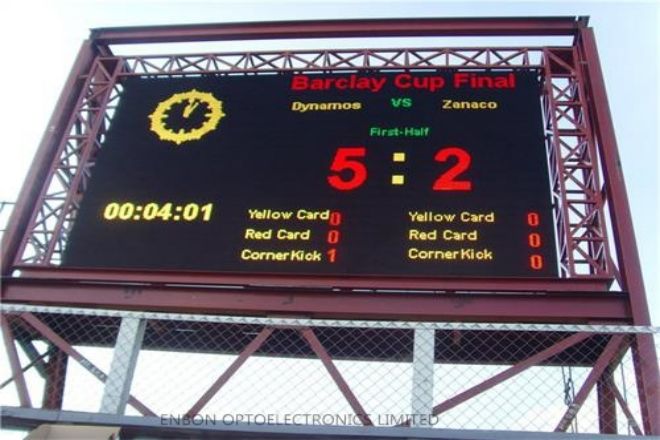
Secondly, LED scoreboards are another important display type on the court. They are mainly used to display game scores, time, player information, and other related content in real-time.
LED scoreboards are usually located on the side or top of the field, ensuring easy viewing by both players and spectators. These displays offer extremely high visibility and stability, remaining clearly visible even in bright sunlight.
In addition, some advanced LED scoreboards also have dynamic effects, sound prompts, and other functions, making the game information more intuitive and vivid.
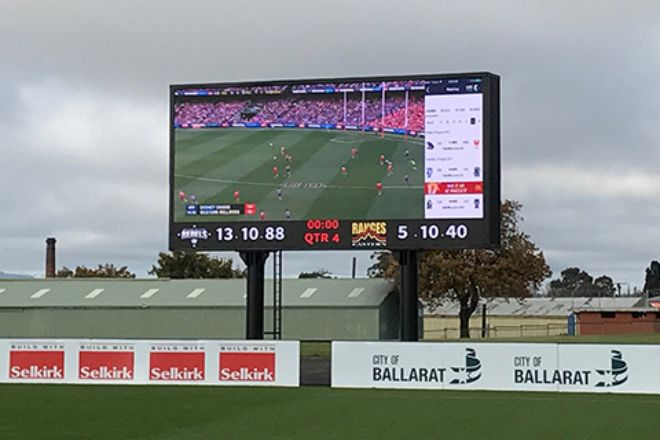
Finally, the broadcast LED display is mainly used for TV or online broadcasts to provide real-time pictures and information for viewers who cannot watch the game live.
These displays need to have high resolution, high refresh rate, and low latency to ensure the clarity and smoothness of the broadcast. Through the broadcast LED display, viewers can watch the game at home or other places and obtain game data and real-time information at any time.
In addition, some broadcast LED displays also have interactive functions. Audiences can participate in interactive activities such as voting and commenting through online platforms, which enhances the audience’s sense of participation and viewing experience.
3. How do you choose the pixel pitch of the stadium LED display?
When selecting the point spacing of a stadium LED display, multiple factors need to be considered to ensure the best visual effects and applicability. Here are some key considerations:
- Viewing Distance:
Viewing distance is an important factor in choosing point spacing. Generally speaking, when the viewing distance is closer, you can choose a smaller dot pitch to obtain higher pixel density and more detailed images. When the viewing distance is far, a larger dot spacing can be selected to save costs while ensuring good display effects.
There is an empirical formula, that is, the optimal visual distance is equal to the point spacing divided by the range of 0.3 to 0.8, but this is only an approximate value, and the actual selection needs to be adjusted according to the specific situation.
- Display requirements:
Display requirements are also a key factor in determining dot spacing. For scenes where high-definition quality and detailed images need to be displayed, such as live sports events or high-definition advertisements viewed at close range, a smaller pixel pitch should be selected.
For some display content that is mainly text or simple patterns, a larger dot spacing can be appropriately selected.
- Factores de costo:
Cost factors are also considered when choosing dot spacing. Generally speaking, the smaller the dot pitch, the higher the difficulty and cost of manufacturing LED displays. Therefore, when choosing point spacing, there are trade-offs based on budget and expected return.
- Technical support and after-sales service:
Finally, when choosing an LED display, you also need to consider the supplier’s technical strength and after-sales service. Ensure that suppliers can provide stable and reliable products and provide timely technical support and after-sales service during use.
Specific to the LED display screen in the stadium, since the stadium usually has a large area, a large number of spectators, and a relatively long viewing distance, a larger point spacing can generally be selected.
At the same time, considering that stadium LED displays usually need to withstand the test of outdoor environments, such as sunlight, rain, high temperatures, etc., it is also necessary to choose products with high protective performance and durability.
In short, choosing the point spacing of the stadium LED display is a process that comprehensively considers multiple factors. In actual operation, it is recommended to communicate with a professional LED display supplier or installation company to make customized selections based on specific needs and conditions.
4. What are the challenges of LED display screens in stadium applications?
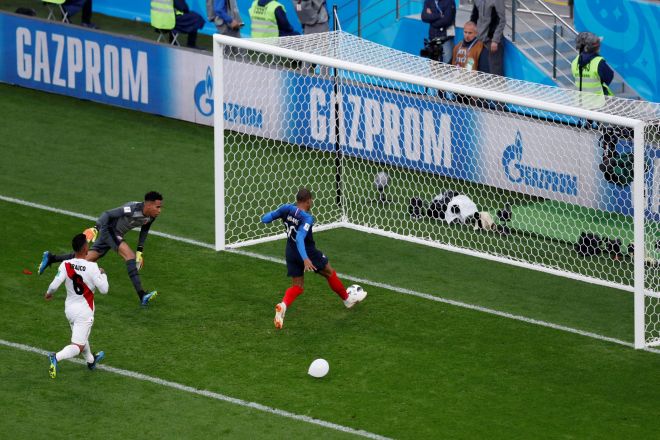
There are indeed some challenges in the application of LED displays in stadiums. These challenges mainly come from aspects such as technology, environment, operation, and safety.
First of all, technical challenges are problems that LED displays must face in stadium applications. Although LED technology has made significant progress, there are still some technical problems that need to be solved to achieve high-definition, high-brightness, and high-refresh-rate display effects in large stadiums.
In addition, the complexity of the stadium environment also places higher requirements on the stability and durability of LED displays.
Secondly, environmental challenges cannot be ignored. Courts are often exposed to the outdoor environment and are affected by natural factors such as sunlight, rain, and dust. These factors may cause the display effect of the LED display to decline or even cause damage to the equipment.
Therefore, how to ensure that LED displays can work normally in various harsh environments is an important issue that stadium operators need to solve.
Furthermore, operational challenges are also problems that LED displays need to face in stadium applications. The stadium’s LED display needs to be updated regularly to reflect the latest event information and commercial advertisements.
This requires a professional operations team to be responsible for content production and updating to ensure the display effect of the display and the accuracy of the information. At the same time, balancing the display of commercial advertisements and event information is also an issue that the operations team needs to consider.
Finally, security challenges cannot be ignored.
Large stadiums have a large number of spectators and a large flow of people, so the installation location and fixation method of the LED display need to be specially considered to prevent damage to the spectators due to equipment falling off or being damaged. In addition, it is also necessary to pay attention to the electrical safety of the display to prevent fires and other safety accidents caused by circuit problems.
Conclusión
The above is an introduction to the three LED displays that are indispensable on the court. As an indispensable part of modern sports venues, they bring an unprecedented viewing experience to the audience with their unique functions and charm.
Si desea conocer más información sobre las pantallas LED, Por favor póngase en contacto con nosotros.
